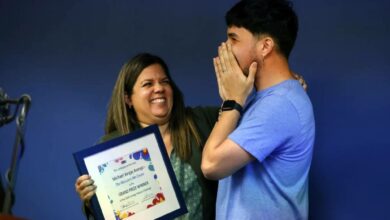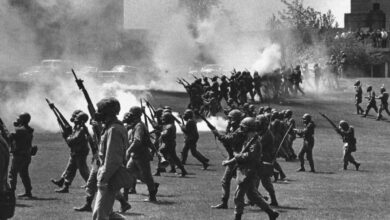A diverse classroom library includes and respects fat characters, too

If a teacher has to explore a book with a fat main character that falls into reductive stereotypes, it can be a learning opportunity. O’Connor encouraged teachers to engage students in discussions about character portrayal and patterns across other books. “Having these discussions builds the critical thinking skills and perspectives we want our students to develop,” she said. “We can teach students to recognize and challenge stereotypes through literature.”
Literature can debunk stereotypes and tropes
Teachers can curate diverse book collections that feature fat characters in multifaceted roles and that combat anti-fat bias. O’Connor emphasized the power of language, urging teachers to discuss words as a tool that can uplift or oppress. She suggested repositioning the word “fat” as a descriptor, not a derisive term.
When choosing a book with a fat character, Smith recommended that teachers ask whether the character’s portrayal contributes to existing harmful attitudes, prejudices or stereotypes. Additionally, it’s crucial to assess whether the character is allowed to grow and change throughout the narrative.
Among Smith and O’Connor’s recommended books for students are Lisa Fipps’ Starfish, Crystal Maldonado’s Fat Chance Charlie Vega, Susan Vaught’s Big Fat Manifesto, and a collection titled The (Other) F Word: A Celebration of the Fat & Fierce, edited by Angie Manfredi. These narratives explore themes of self-acceptance, challenging societal norms and celebrating diverse bodies. Other recommendations include the anthology Every Body Shines, edited by Cassandra Newbould, Claire Kann’s If It Makes You Happy, Paul Coccia’s Cub, and Gabby Rivera’s Juliet Takes a Breath, each contributing to a tapestry of stories that defy stereotypes and promote body positivity.
Where teachers can start
Addressing the needs of students, especially those experiencing fatphobia, begins with critical introspection, according to Smith. She suggested making a table with the days of the week and noting what you do to support students and colleagues who are fat. “Oftentimes very little is written down,” she said.
Some teachers may not know where to start and don’t want to say the wrong thing when broaching discussions about body size. Smith urged educators to familiarize themselves with fatphobia and read fat literature for adults, such as The Body Is Not an Apology by Sonya Renee Taylor, which advocates for radical self-love to counteract harm caused by bias or fatphobia, and What We Don’t Talk About When We Talk About Fat by Aubrey Gordon, which covers how to challenge cultural attitudes and advocate for social justice.
Highlighting the historical intersections of race and body size, Smith considers Fearing the Black Body: The Racial Origins of Fat Phobia by Sabrina Strings a keystone text. Thickening Fat: Fat Bodies, Intersectionality, and Social Justice, edited by May Friedman, Carla Rice and Jen Rinaldi, explores fat oppression and activism through various perspectives.




